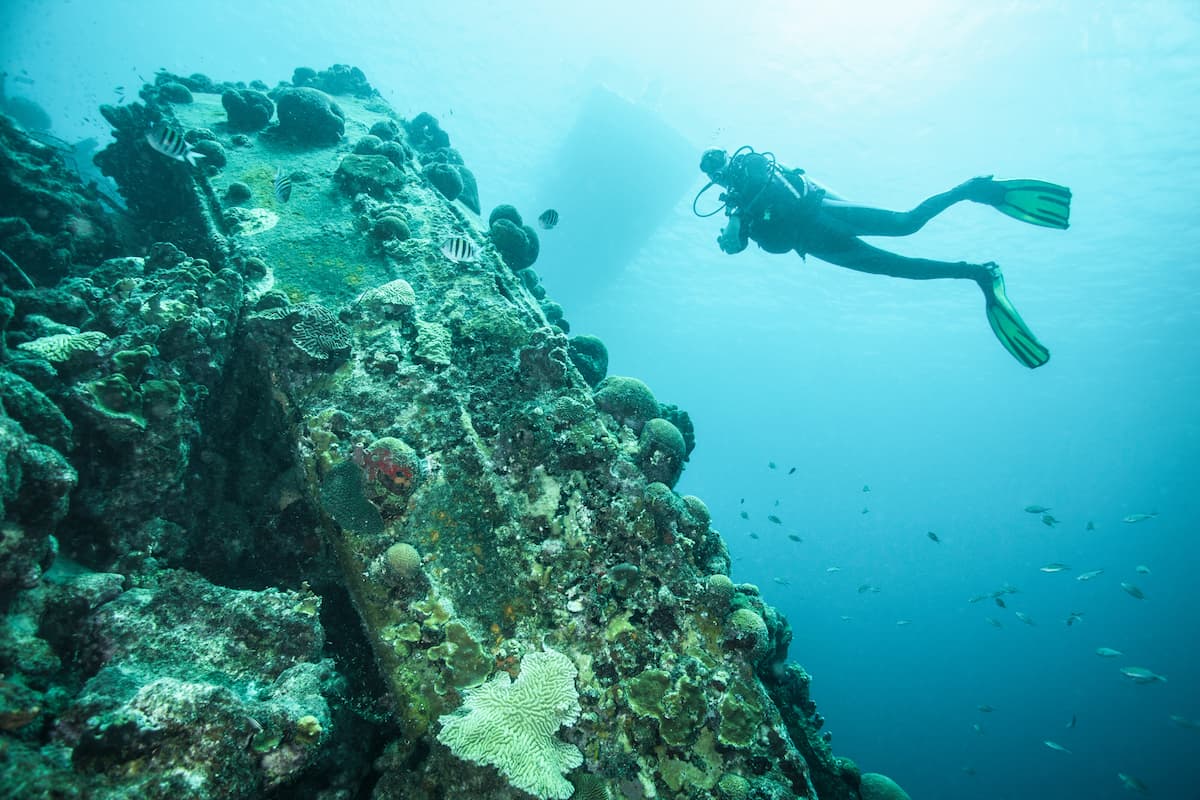The guided dive is a fascinating experience that attracts adventure enthusiasts, nature lovers, and the curious of all ages. In this article, we will explore all aspects of this exciting activity, from its preparation to techniques, from safety to environmental impact, providing a comprehensive guide for those who wish to dive into the underwater world.
Preparation and Training
Before plunging into the crystal-clear waters, it is essential to receive proper training. This process begins with theoretical lessons covering essential topics such as the physics of diving, physiology, necessary equipment, and safety techniques.
The practical part includes learning how to use underwater equipment: the air tank, the regulator, which allows breathing underwater, and the buoyancy control jacket, essential for controlling buoyancy.
READ ALSO: Explore The Underwater World: Diving With Manatees In Florida
The Diving Experience
Guided by a certified instructor, divers explore various marine environments, from life-rich coral reefs to sunken wrecks full of history. The expert not only ensures safety during the dive but enriches the experience with explanations about marine flora and fauna, contributing to continuous and engaging learning.
Safety in Diving
Safety is a crucial aspect of guided diving. Instructors ensure that participants know and respect the fundamental rules, such as underwater communication, buoyancy control, and air monitoring. Moreover, guided dives are often conducted in small groups, allowing the instructor to maintain constant attention on each diver.
Respect for the Marine Environment
A central element of guided dives is the respect for the marine environment. Instructors emphasize the importance of not disturbing marine life and avoiding damaging corals and other vulnerable ecosystems. This responsible approach is fundamental for the conservation of marine biodiversity.
Types of Guided Dives
The guided dives can vary widely in terms of location and type. Some are designed for beginners in shallow and calm waters, while others are meant for experienced divers exploring deeper and more technically challenging sites.
There are also specialized dives, such as night dives, underwater photography, or those dedicated to environmental study and conservation.
READ ALSO: Exploring The Depths: Diving With Bull Sharks
Necessary Equipment
The equipment for diving includes a mask, fins, wetsuit, air tank, regulator, and a buoyancy control jacket. Many diving schools provide the necessary equipment, but some divers prefer to purchase their own gear for better customization and comfort.
Guided diving offers a unique and fascinating way to explore the underwater world. Whether it’s swimming among colorful tropical fish or exploring ancient wrecks, each dive is an adventure that enriches knowledge and respect for our planet. With the right preparation and respect for the environment, guided diving can be an unforgettable, safe, and responsible experience.
NEED FURTHER INFORMATION?
CONTACT US NOW



